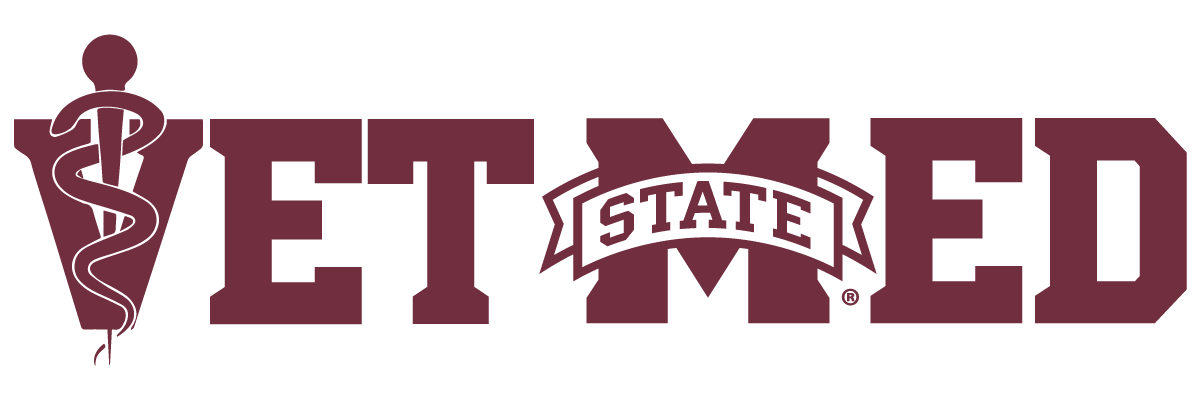By Livingston Sykes
Listen to an Interview with Dr. Giles on the Vet Med Cast
When you walk into the Animal Emergency & Referral Center (AERC) in Flowood, you may spot a dog walking across balance beams, maneuvering through obstacle courses, or even exercising on the underwater treadmill. This is the world of canine rehabilitation, and a key player is Dr. Kelsie Giles, a clinical instructor at Mississippi State University’s College of Veterinary Medicine and the only certified canine physical therapist in the state of Mississippi.
Though her patients are four-legged, Dr. Giles’ professional journey began much like that of any human physical therapist. She earned her Doctor of Physical Therapy, or DPT, from the University of Mississippi Medical Center, completing the same rigorous training program required for treating people; however, from the beginning, her passion was for animals.
“I’ve always loved animals. I took my first job at a veterinary practice when I was 15, but I wasn’t sure if becoming a veterinarian was exactly the right fit,” she said. An athlete herself, Giles was drawn to the rehabilitation and sports medicine aspects of physical therapy during college. Then, while completing a physical therapy assistant program prior to earning her DPT, she discovered a niche that combined both her passions: canine rehabilitation. “I am certified in canine rehabilitation through the Canine Rehabilitation Institute. I finished this certification during my last year of PT school,” she said.
Following graduation from UMMC, Giles initially worked with human patients in outpatient orthopedics while researching paths into animal rehab. A personal experience with her own dog’s injury ultimately led her to connect with Dr. Wendy Byrd at the AERC, an MSU CVM faculty member and veterinarian certified through the Canine Rehabilitation Institute. Giles ultimately joined the AERC team, where she and Dr. Byrd now work closely to develop individualized therapy plans for dogs—and sometimes cats!
“Every patient is different,” Giles says. “Just like with people, we have to find what motivates them, whether it’s food, praise, or just spending time with their owners. And just like people, building trust is step one.”
Many people associate physical therapy with painful stretches and exercises, but Giles emphasized that the approach for animals is gentler because it takes more time to establish that trust; however, it is also carefully tailored to each patient’s needs and tolerance just like with humans. “It's not about pain, it’s about fatigue; controlled fatigue helps build strength and stability. We work them to that point but not beyond it,” she says.
Whether it’s helping a dog retain a full range of motion after surgery, improving strength in senior pets, or maintaining mobility for sporting and hunting dogs, Giles and the AERC therapy team use a wide range of techniques. The session might include balance work, soft tissue manipulation, underwater treadmill exercises, or laser therapy. They also work closely with pet owners, teaching them home exercises to complement clinical treatments.
In fact, one of Giles’ most dedicated patients is her own dog, Ruby. After suffering multiple orthopedic injuries, including a torn ligament and elbow injury, Ruby now visits the clinic regularly for maintenance therapy, including soft tissue work and underwater treadmill sessions. “She's a sweetheart, and the treadmill helps her stay strong while reducing strain on her joints,” Giles says. “Ruby comes for therapy and is used as a teaching aid for students. They are able to feel some normal and abnormalities in orthopedic exams.”
While dogs make up the majority of her patients, Giles says cats can also benefit from physical therapy, although their independent personalities sometimes present unique challenges.
“Cats are funny. They hide pain very well, but once you find their motivation, whether it’s a favorite box or toy, you can absolutely get them engaged in therapy,” she says.
As the field of veterinary rehabilitation continues to grow, Giles is excited about the future. She is currently developing a specialized program for hunting and working dogs to help reduce injury risk and maintain peak performance during active seasons. “A lot of these dogs work hard during hunting season and are much less active the rest of the year,” she explained. “Specialized conditioning and strengthening exercises can make a huge impact as they age.”
Giles notes that owners should watch their pet’s weight and keep them active. “Obesity is a huge factor in orthopedic problems. Just like with people, strength and mobility are vital for aging well. Exercises as simple as sitting to standing repetitions can go a long way,” she says.
In addition to treating patients, Giles also contributes to the teaching mission of MSU CVM by working with veterinary students during their rotations through AERC. She helps them learn proper orthopedic exams and offers insight into animal rehabilitation, an emerging field that blends veterinary and human healthcare.
